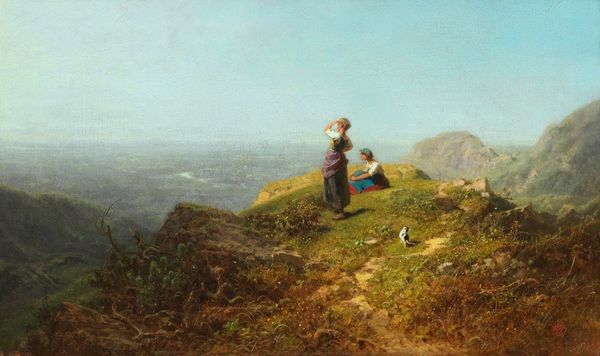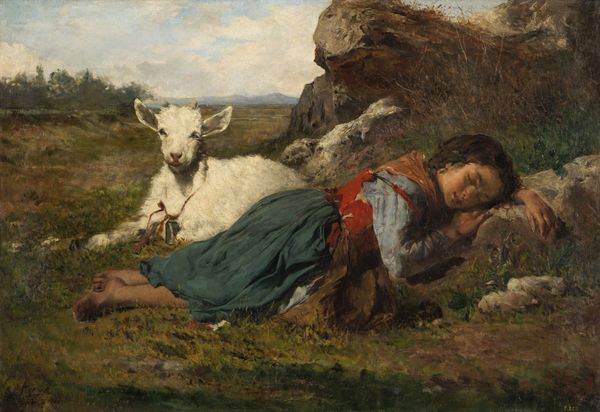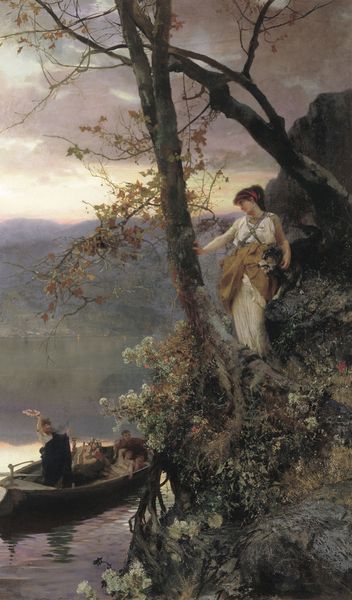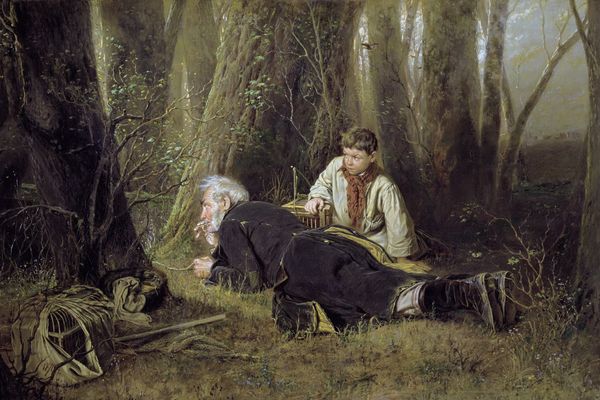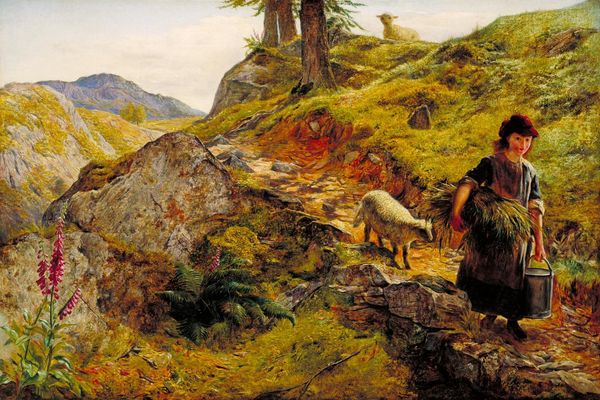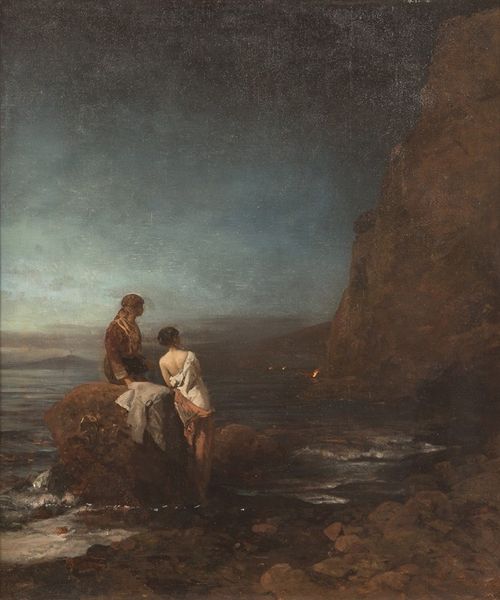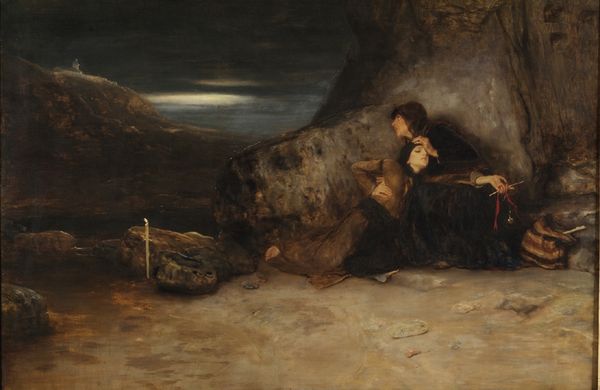
painting
#
painting
#
landscape
#
romanticism
#
mountain
#
genre-painting
#
fantasy sketch
Dimensions: 48.6 x 42.2 cm
Copyright: Public domain
Editor: We're looking at Karl Lessing's "The Robber and His Child," painted in 1832. It's incredibly striking how the vast landscape dwarfs the figures, but they are very affecting nonetheless. The weariness of the father seems palpable. What emotional currents do you read in this piece? Curator: Indeed. Consider the robber, not just as a figure in the landscape, but as a symbol. What does it mean to be an outlaw, a rebel against societal norms, particularly during the Romantic period? The landscape itself acts as a stage— a place of freedom but also exposure. Do you see parallels between the robber’s plight and the wider societal shifts of the time? Editor: I hadn't thought about that directly, but now that you mention it, the figure seems isolated, even exiled. Curator: Precisely. The child offers another layer of interpretation. In folklore, children often represent innocence and vulnerability, emphasizing the robber’s humanity. Lessing might be asking us: What compels a person to break the law? Are they inherently evil, or victims of circumstance? Consider also how the weapon serves as a phallic symbol but its being cast aside suggests defeat or weariness from defending an embattled position. Editor: So the painting explores deeper questions about morality and social justice rather than just telling a story? Curator: Absolutely. The landscape isn’t just a pretty backdrop; it’s a reflection of inner turmoil and societal pressure. Consider too how these Romantic themes played into nationalistic fervor across Europe during the nineteenth century, exploring the individual and one's relation to the vast nation. Editor: That is a fascinating way to approach it. It’s given me a completely different perspective on how to read these symbols within their cultural context. Curator: It’s about recognizing the language of images, their capacity to speak volumes about history, psychology, and cultural memory.
Comments
No comments
Be the first to comment and join the conversation on the ultimate creative platform.

